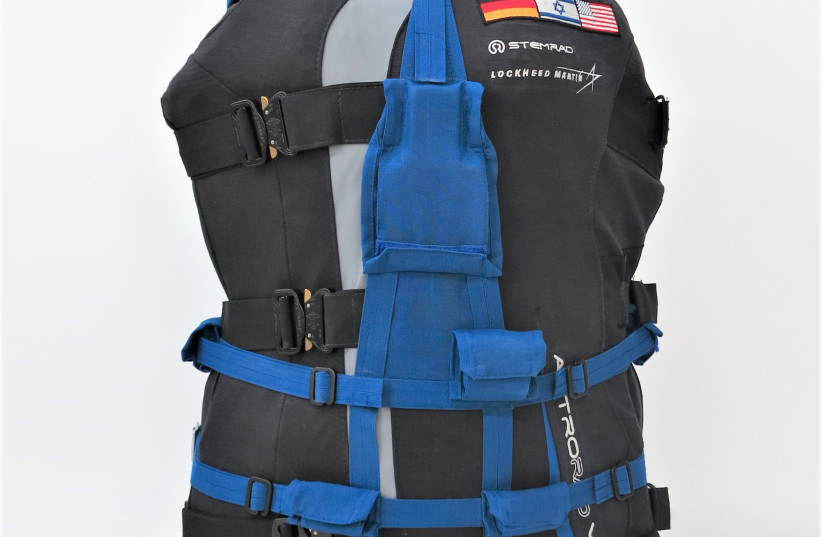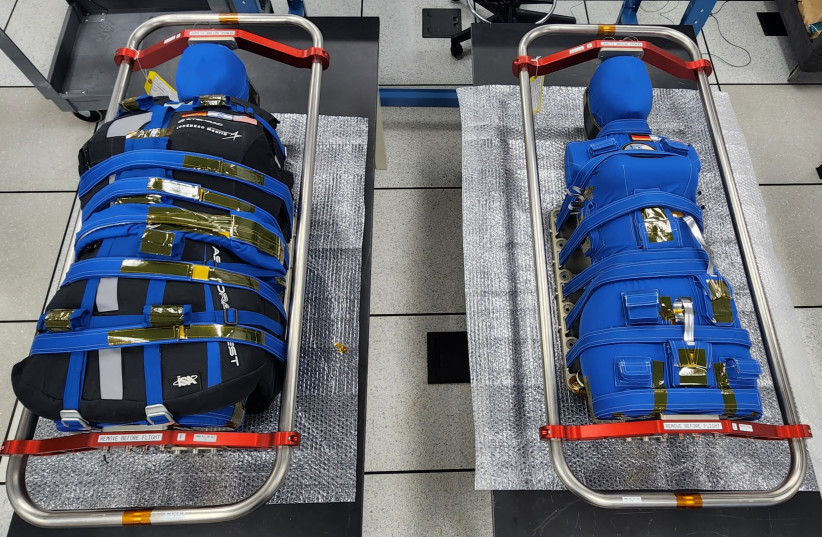NASA’s Orion spacecraft is set to take off for the long-awaited Artemis I mission to the Moon, and Israel is taking part in one of the scientific experiments involved.
The mission is a collaboration between the National Aeronautics and Space Administration (NASA), the Israel Space Agency and the German Aerospace Center (DLR). It is set to be launched onboard NASA’s most powerful-ever rocket on Monday, August 29.
The Artemis I mission, which does not have an onboard crew, will feature an Israeli experiment called the Matroshka AstroRad Radiation Experiment (MARE). It will study radiation exposure and test out the AstroRad protective vest developed by Israel’s StemRad firm, supported by the Israel Space Agency.
"Israel is one of the very few states that has managed to introduce original technology for Artemis I. This is part of Israel’s long-standing successful space heritage that we are committed to continuously strengthening."
Hilla Haddad Chmelnik, director-general of the Science and Technology Ministry in Israel
“Israel is one of the very few states that has managed to introduce original technology for Artemis I,” Israeli Science and Technology Ministry Director-General Hilla Haddad Chmelnik said in a statement.
“This is part of Israel’s long-standing successful space heritage that we are committed to continuously strengthening,” she said.

What is Israel bringing to NASA's Artemis I Mission?
MARE is meant to solve what is probably one of the biggest dangers to astronauts heading on space missions: space radiation.
The StemRad vests have already been sent to the International Space Station for the Comfort and Human Factors AstroRad Radiation Garment Evaluation (CHARGE) study to test the vest in a microgravity environment, meaning in low-Earth orbit. However, they have not yet been tested farther out into space.
This is important as NASA’s Artemis missions are set to lead up to mankind’s eventual return to the Moon. To do that, it means that astronauts will leave low-Earth orbit, which in turn means leaving the protection of Earth’s magnetic field against cosmic radiation. As such, finding a way to protect against that is incredibly important.
This is where Israel comes in. StemRad has created a new protection vest that should work to provide protection against space radiation.
NASA’s Artemis I mission will be uncrewed, so no actual humans will be on board the Orion spacecraft.
Instead, the spacecraft will be carrying two identical manikin torsos, named Helga and Zohar, the former being in honor of the participation of Germany and the latter in honor of the participation of Israel.

Both manikin torsos, also known as “phantom torsos,” are meant to mimic the bones, tissue and organs of an adult human female. The reason they are specifically modeled after females is that females often are more sensitive to space radiation.
This is important because as part of NASA’s Artemis missions, the eventual goal is to put the first woman astronaut on the Moon.
Helga will be going in unprotected as the control group while Zohar will be wearing a StemRad vest to cover the uterus, upper body and critical organs. Both manikin torsos will wear radiation detectors to help scientists map out how the radiation doses spread.
This will be an important test for the viability of the StemRad vests, as well as getting more information about space radiation exposure.
If all goes well with MARE on the Artemis I mission, it’s likely that astronauts will be wearing StemRad vests in future space missions.
